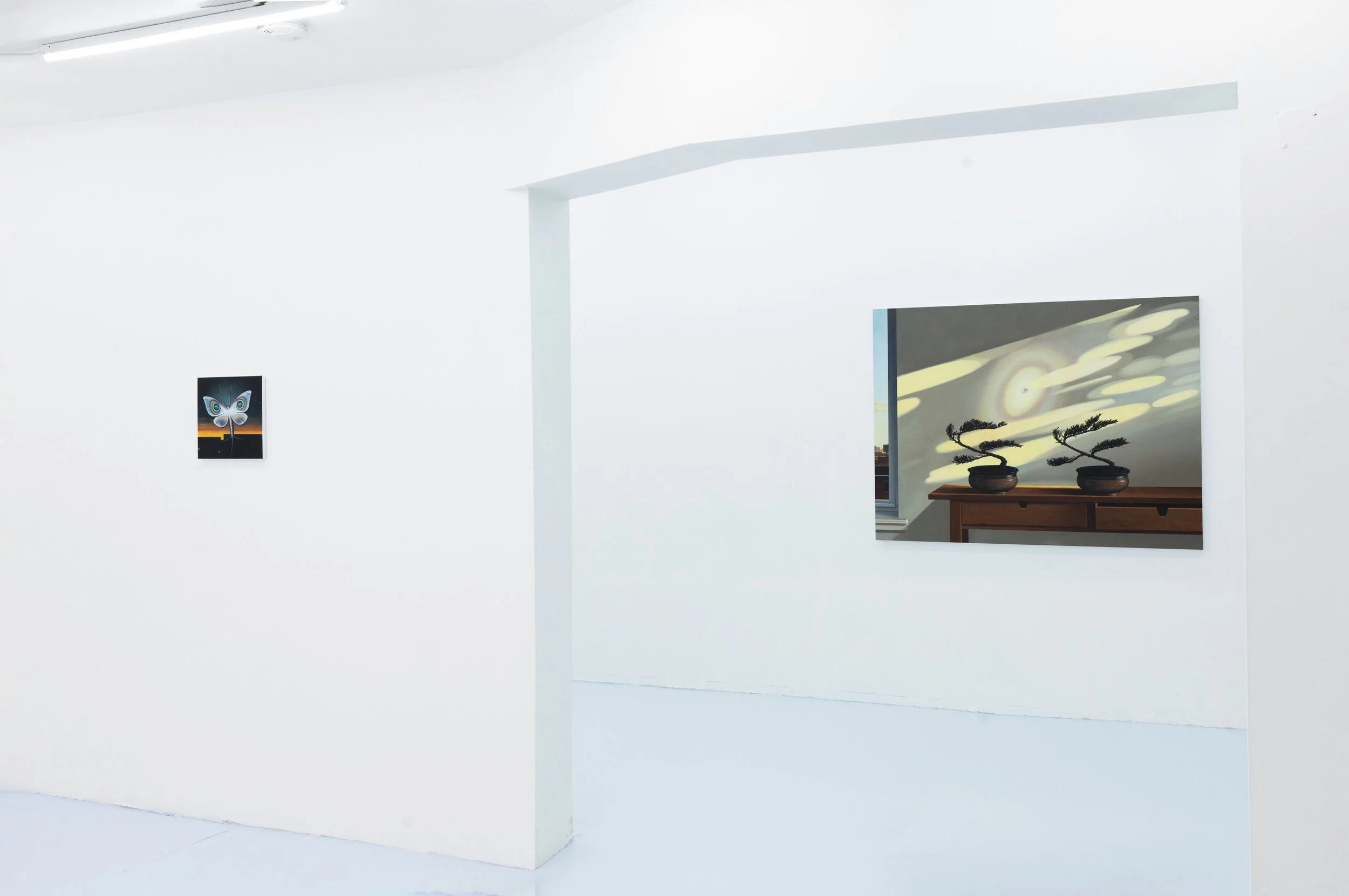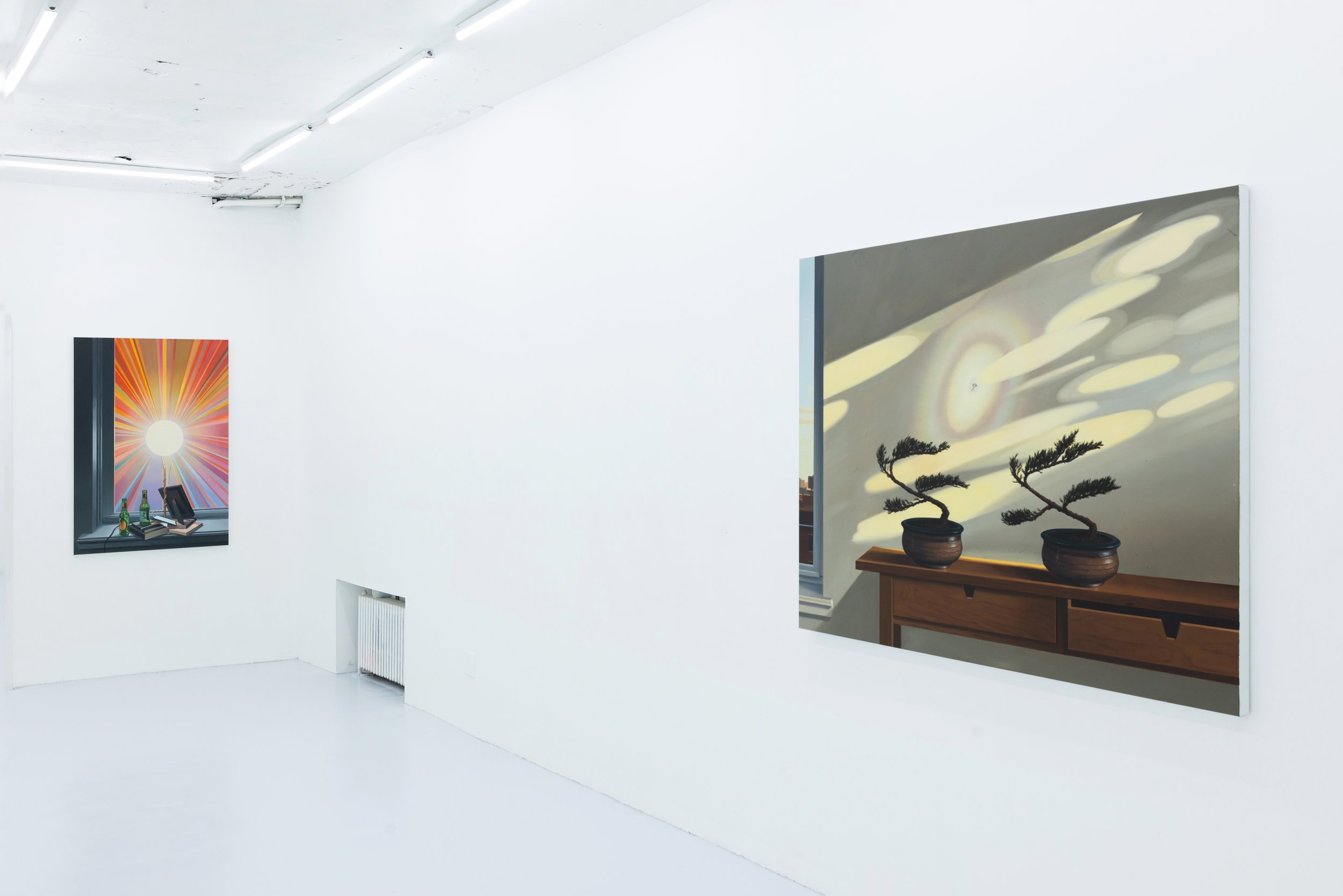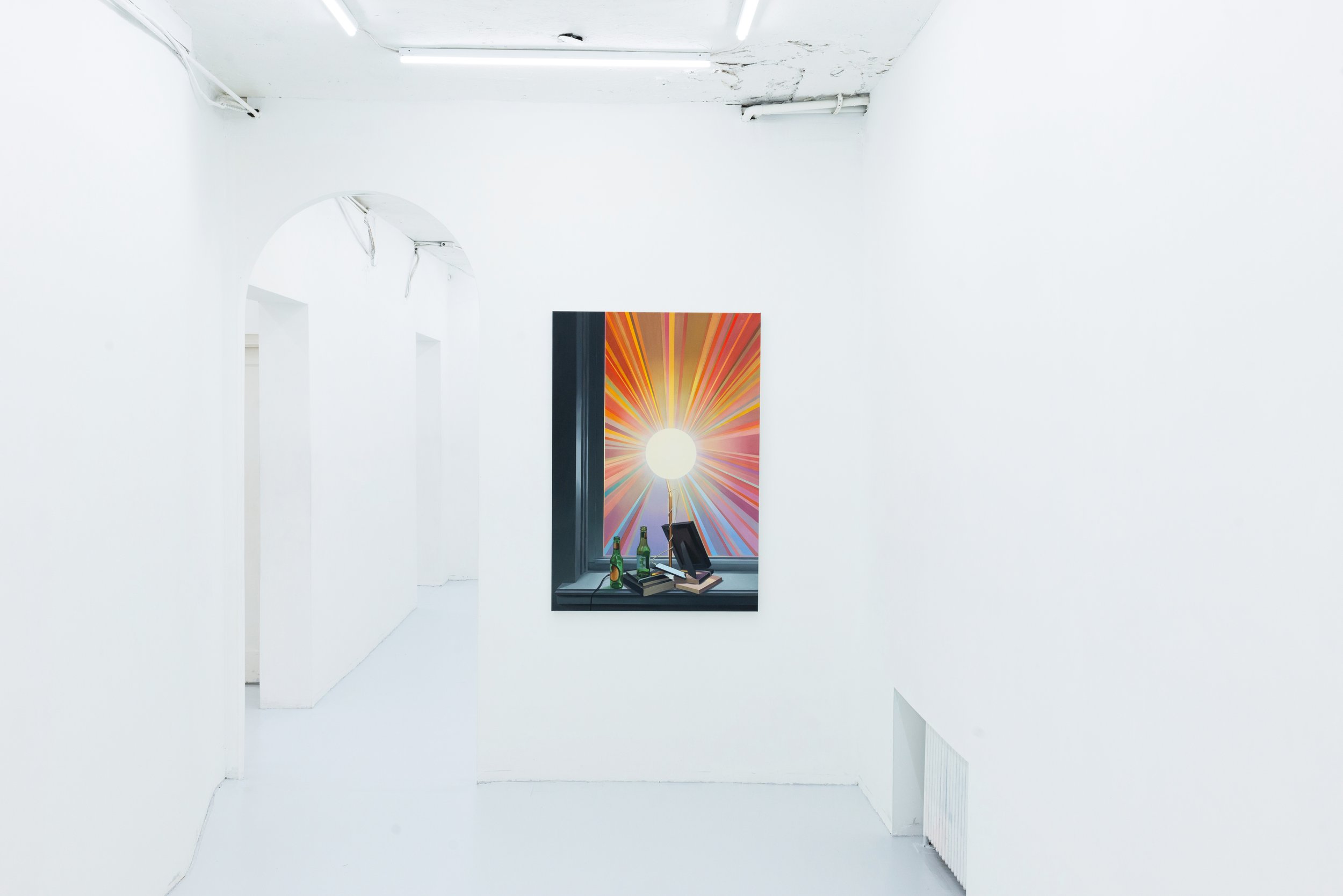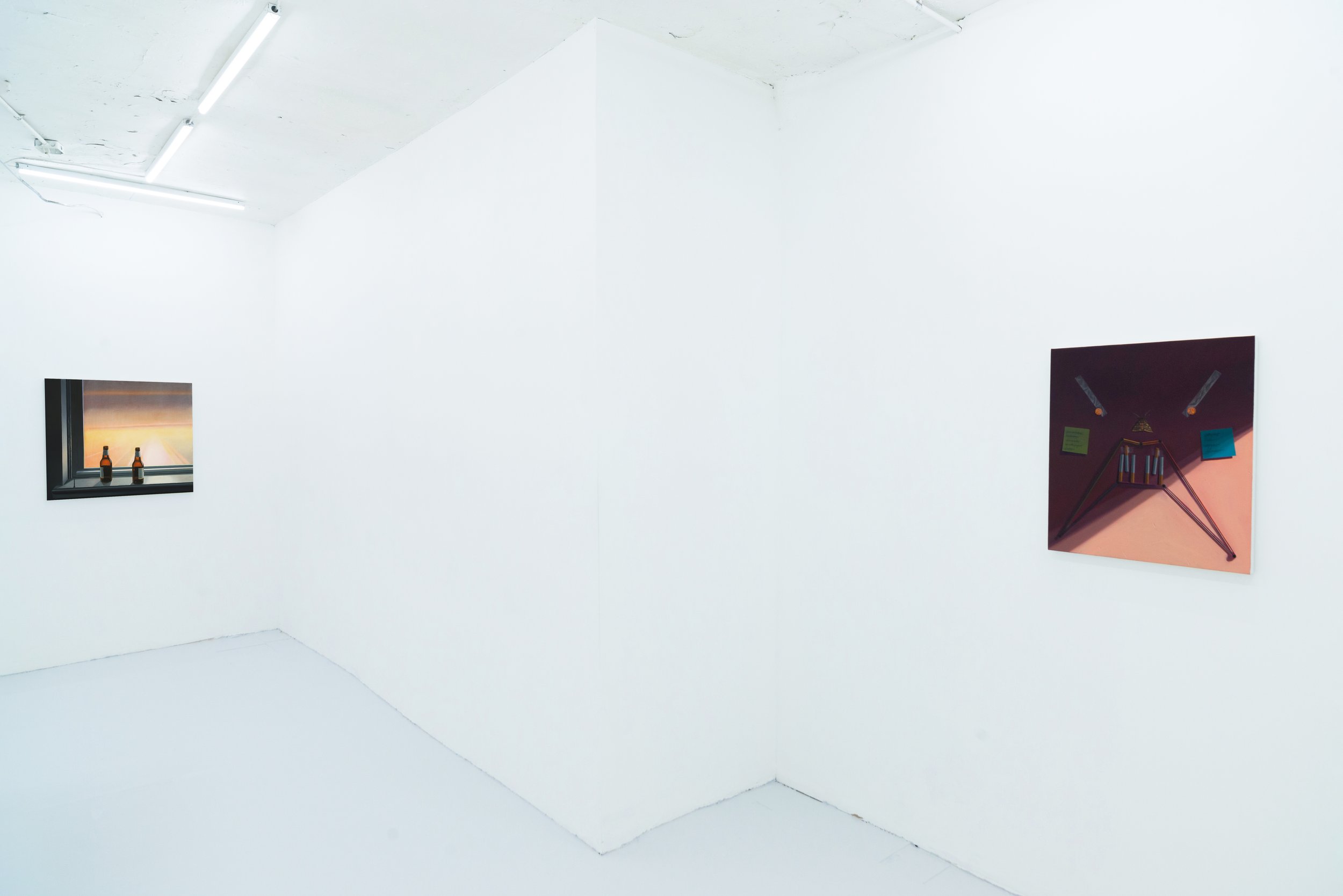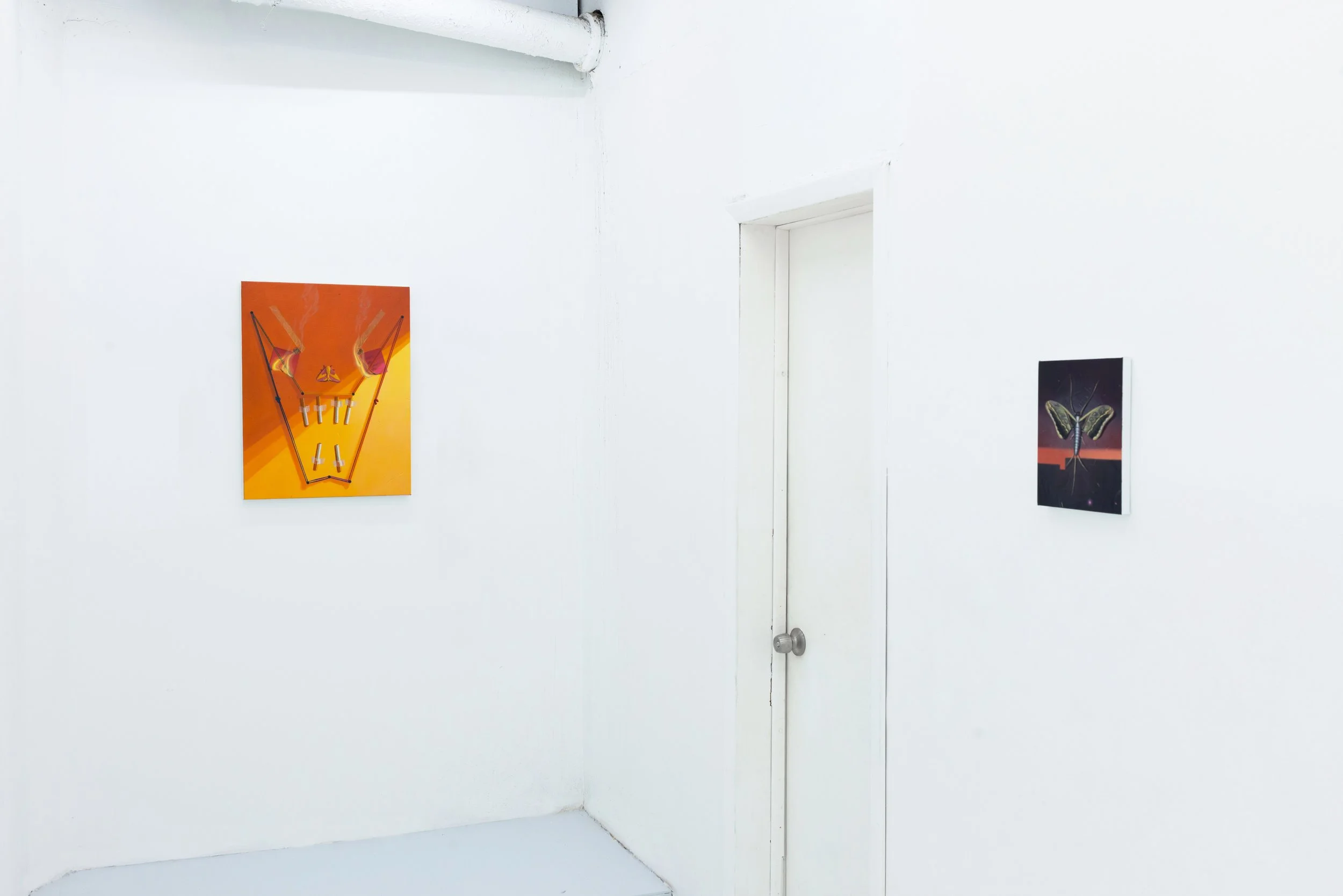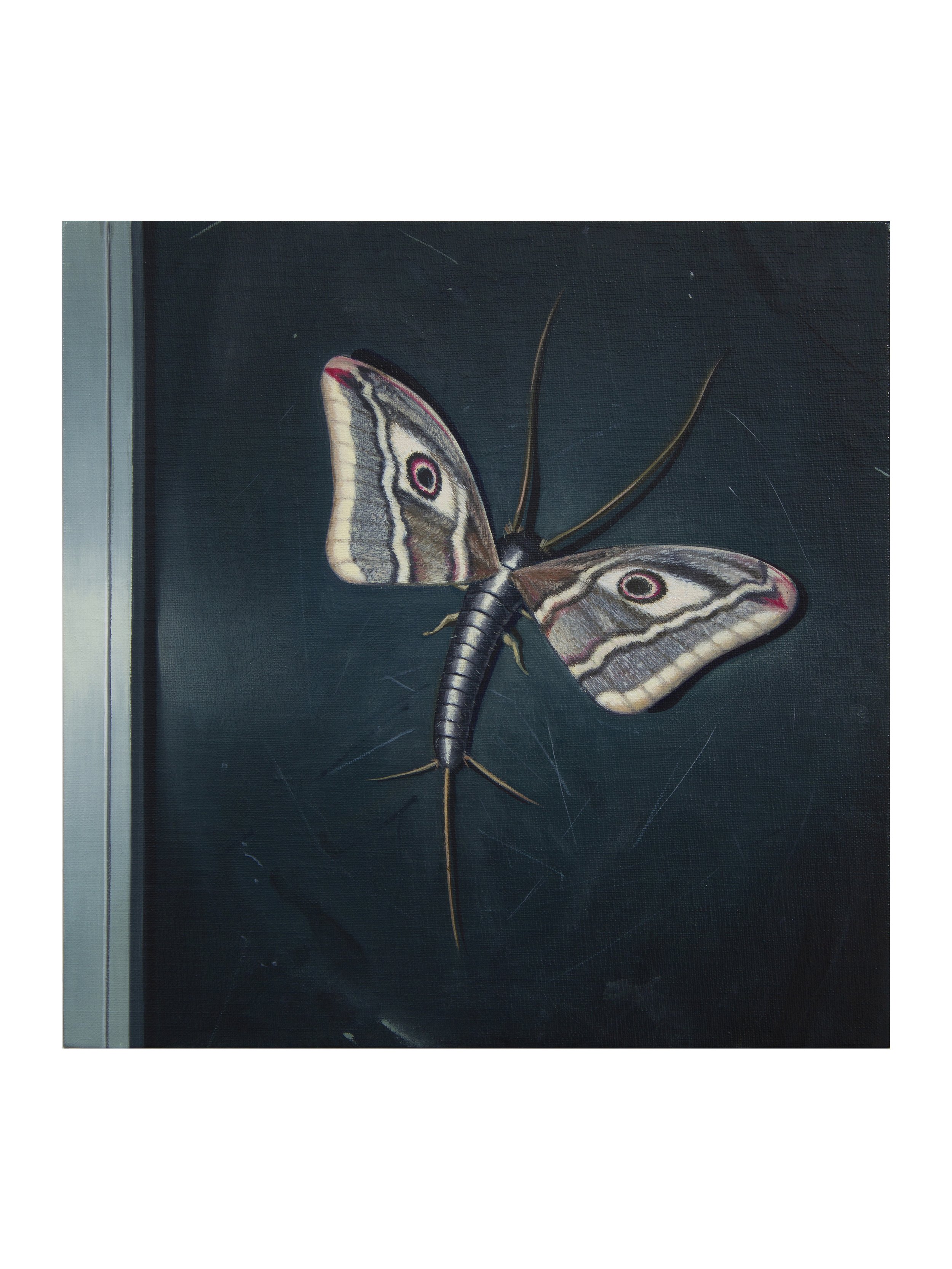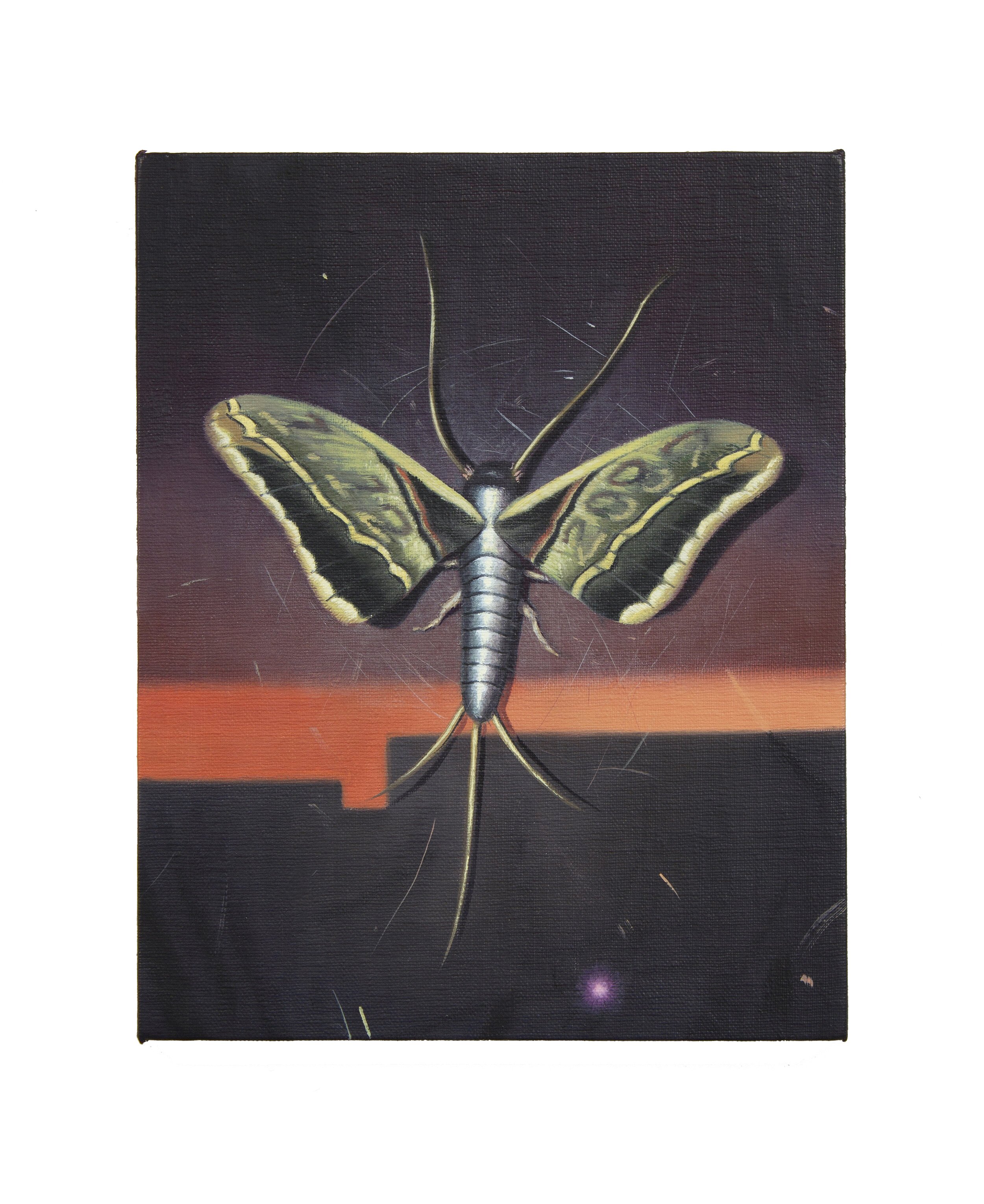Jack Barrett is pleased to present Future Machine, Paul Rouphail’s first solo exhibition with the gallery.
The volatility of the first nine months of this year have made any attempt to predict the future entirely ineffectual. Because prediction is calculated across the axes of stability and variability of the subject in question, if said subject is uniquely mercurial or aberrant by nature then its fate becomes all but impossible to foresee.
The Zbigniev Herbert poem (above) reminds me that painting, as an embodiment of faith, can transcend its own triviality through sheer intention and scale. In creating a world onto itself, a painting foretells events that are based on its own internal rules concurrent with the presumptions of the artist making them. The ten paintings I made for this show depict a world of objects unmoored from their everyday utility and transformed into something else.
Peter Blume’s painting Light of the World (1932) and Zbigniev Herbert’s poem are important touchstones for the work on display. Centered in the middle of his painting, Blume’s tower of light references the Highland Lighthouse on Cape Cod, “the first sight seen by many European immigrants arriving in America.” Vignettes of American pastoral scenes, and architecture elements of cultural institutions swirl around the growing tower of light. Like Herbert’s object, the presence of Blume’s light is insoluble, immense and defined by both the personal anecdotes of the artist and the myth of his subject. The uncertain future that Light of the World foretells is of the immeasurable promise of political and spiritual salvation of the country, and the threat that the light itself—in a flash—might render its promise incomplete.
The ten paintings in the show are variations on Blume’s light, as are the numerous portraits of insects that are drawn to its power. In the paintings you will find common lamps, books, iPads, family photographs, beer bottles, cigarettes, hybrid insects, and flaming post-it notes. There are also tributes to Horace Pippen, William Blake, Giorgio Morandi, among others whom I’ve admired during the quarantine months of spring and summer. The “future machine” is a fortune teller; it is the absence of the object in Herbert’s poem; it is light.
Paul Rouphail Blue Eyes, 2020 Oil on linen mounted to panel 12 x 12 inches
Paul Rouphail Strange Creature, 2020 Oil on linen mounted to panel 12 x 12 inches
Paul Rouphail 100 Years, 2020 Oil on linen mounted to panel 10 x 8 inches
Paul Rouphail Frowning Face, 2020 Oil on linen 26 x 22 inches
Paul Rouphail Grinning Face, 2020 Oil on linen 26 x 20 inches
Paul Rouphail Light in a Room in a Landscape, 2020 Oil on linen 47 x 80 inches
Paul Rouphail Potted Plant in a Window (After Horace Pippin), 2020 Oil on linen 22 x 18 inches
Paul Rouphail Future Machine, 2020 Oil on linen 52 x 36 inches
Paul Rouphail Two Beers, 2020 Oil on linen 32 x 30 inches
Paul Rouphail The Nail in the Wall, 2020 Oil on linen 46 x 62 inches


